Winning our Movements Inside and Out: Shifting the Social Justice Back into our Work
By Jardana Peacock
Trauma is everywhere. It lives in between the lines of the articles we scan on Facebook, in our interactions with others, in our holistic health clinics, in our social justice organizations, and in our organizing work. It also lives in our bodies, psyches and spirits.
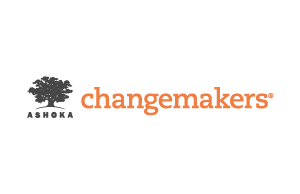 Changemakers, in particular, are living with and working through two kinds of trauma simultaneously: primary and secondary trauma. Primary trauma, as described in The Body Keeps the Score by Bessel van der Kolk, is trauma experienced in the body by an individual, but is related to the collective. This includes the trauma of medical surgery, sexual abuse and other forms of violence. Secondary trauma, as introduced in Trauma Stewardship by Laura Van Dernoot Lipsky and Connie Burk, is trauma that is experienced through working in traumatic situations, with traumatized populations, and around traumatic issues. This encompasses the effects of white supremacy, the climate crisis, and poverty, just to name a few. Oftentimes, what calls us to social justice work is the trauma or marginalization that we’ve experienced or witnessed personally and feel compelled to resist and change systemically. In social justice work, we are constantly experiencing secondary trauma, which also triggers our primary trauma. However, there often isn’t enough space within our work to address the relationship and effects of these traumas, especially as it relates to our bodies and mental health.
Changemakers, in particular, are living with and working through two kinds of trauma simultaneously: primary and secondary trauma. Primary trauma, as described in The Body Keeps the Score by Bessel van der Kolk, is trauma experienced in the body by an individual, but is related to the collective. This includes the trauma of medical surgery, sexual abuse and other forms of violence. Secondary trauma, as introduced in Trauma Stewardship by Laura Van Dernoot Lipsky and Connie Burk, is trauma that is experienced through working in traumatic situations, with traumatized populations, and around traumatic issues. This encompasses the effects of white supremacy, the climate crisis, and poverty, just to name a few. Oftentimes, what calls us to social justice work is the trauma or marginalization that we’ve experienced or witnessed personally and feel compelled to resist and change systemically. In social justice work, we are constantly experiencing secondary trauma, which also triggers our primary trauma. However, there often isn’t enough space within our work to address the relationship and effects of these traumas, especially as it relates to our bodies and mental health.
Organizing campaigns are often created around life or death issues, where time is of the essence. In truth, we cannot address the amount of injustice in the world in our human bodies – they simply are not designed to meet the demand. The weight and magnitude of the world’s injustices has brought upon intense spiritual, psychological, and physical effects on our beings. Despite this, human beings are magnificently resilient. For example, when working class organizers take an extra shift for someone whose child is sick, when an organization pauses to celebrate the birthday of an employee, when organizers meet around the table for a home cooked meal – these are all examples of taking care of our well-beings in this kind of work. Healing and wellness doesn’t always look like pausing for a “yoga break” or a walk in the woods. Usually, it looks like really seeing each other and creating space for ourselves and others to step into our full power in that pause. We must keep central the fact that when we’re working for justice, we’re working with trauma.
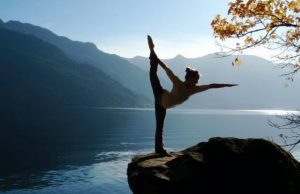 As a young activist immersed in racial justice organizing work in Tucson, Arizona, I came into confrontation early on with the effects of my unprocessed trauma from years of sexual violence as a child and teen. I discovered that my usual coping mechanisms of drugs and alcohol, although effective in escaping pain, were insufficient in addressing and resolving it. I couldn’t show up in my role as a youth leader hung over and remain present with youth who were experiencing extreme poverty and trauma in their own lives. My colleagues were unprepared to walk me through healing and I was unprepared in my own nascent activism and understanding of anti-racism to know what to ask for. To cope, I turned to yoga, meditation, the natural world, and focused on building a community of care and support. In the process of stepping into my leadership, I stepped back into my body and began to experience a radical transformation in myself and in my organizing work. Instead of employing techniques of escapism from the trauma, I became equipped with the tools to process trauma and show up for other’s trauma. This embodied leadership approach became a guide that has sustained and informed my work, activism, and life since.
As a young activist immersed in racial justice organizing work in Tucson, Arizona, I came into confrontation early on with the effects of my unprocessed trauma from years of sexual violence as a child and teen. I discovered that my usual coping mechanisms of drugs and alcohol, although effective in escaping pain, were insufficient in addressing and resolving it. I couldn’t show up in my role as a youth leader hung over and remain present with youth who were experiencing extreme poverty and trauma in their own lives. My colleagues were unprepared to walk me through healing and I was unprepared in my own nascent activism and understanding of anti-racism to know what to ask for. To cope, I turned to yoga, meditation, the natural world, and focused on building a community of care and support. In the process of stepping into my leadership, I stepped back into my body and began to experience a radical transformation in myself and in my organizing work. Instead of employing techniques of escapism from the trauma, I became equipped with the tools to process trauma and show up for other’s trauma. This embodied leadership approach became a guide that has sustained and informed my work, activism, and life since.
For the past three years, I have led hundreds of Changemakers all over the world (although primarily within the U.S.) through practices that support leadership and address their trauma. These practices include: centering, practices of mindfulness and healing, cultivating clarity by building connection to our intuition and deepening our relationship with the “wisdom within”, diving into the ways that white supremacy shows up in our bodies and work, and re-committing to community wellness models as vital to sustaining our movements for social change and ourselves. My clients have included individuals and organizations from the fields of social work, yoga, community organizing, nonprofits, healing and faith, among others. Working intensively with so many Changemakers has led me to understand how prevalent the experience of trauma is in our movement and how detrimental the impact of ignoring healing is to our individual and collective hearts, minds, bodies, and spirits.
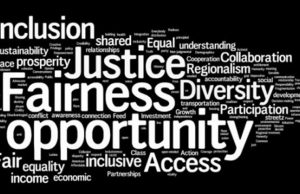 The reality is that social justice movements are on the edge of burnout. Folks want to break out of cycles of overwhelm and self-doubt, to step out of fear and into their best selves. People feel called to step up in this moment of intense trauma, but where is the healing space for folks to expand into their leadership and courage? Ignoring the place of healing in our social justice work is a byproduct of not dismantling white supremacy and capitalism inside of our organizations. How is our social justice movement interrupting a capitalism that views people as producers and not as human beings in need of nourishment, care, and love? How are our movements for change centering a Black woman whose life is under constant attack, the healing of a woman with reproductive health concerns, or a trans man in transition? How are we enacting the same kind of trauma inside our organizations as we are trying to eradicate outside in the world? How do those contradictions hinder and harm us and compromise our missions of justice, freedom, love, and connection?
The reality is that social justice movements are on the edge of burnout. Folks want to break out of cycles of overwhelm and self-doubt, to step out of fear and into their best selves. People feel called to step up in this moment of intense trauma, but where is the healing space for folks to expand into their leadership and courage? Ignoring the place of healing in our social justice work is a byproduct of not dismantling white supremacy and capitalism inside of our organizations. How is our social justice movement interrupting a capitalism that views people as producers and not as human beings in need of nourishment, care, and love? How are our movements for change centering a Black woman whose life is under constant attack, the healing of a woman with reproductive health concerns, or a trans man in transition? How are we enacting the same kind of trauma inside our organizations as we are trying to eradicate outside in the world? How do those contradictions hinder and harm us and compromise our missions of justice, freedom, love, and connection?
While capitalism takes the spirit, intuitive wisdom, and vision of social justice out of our organizing, patriarchy invalidates the emotional, which is integral to how we organize. White supremacy then suggests that we “take care” of ourselves behind closed doors and that healing and wellness need to happen “off-site” or “outside of our bodies” when in actuality, healing is a community process and reckoning that validates our humanity. As long as we buy into these often-invisible systems of oppression, our movement work will continue to maintain a shortsighted visionary life cycle. We’ve got the “what” down; however, the “how” needs attention. We are throwing away the next generation of visionary leadership because many are saying, “Enough with this martyrdom culture, there is something inhuman about how we are working and treating each other,” and folks are finding other jobs outside of movement work. For folks balancing families, care-taking, and health challenges, it becomes even more challenging to find a place in social justice movements that aren’t prioritizing complete healing.
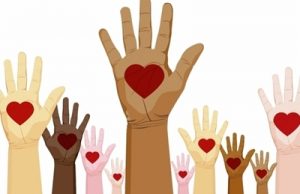 We need to honestly ask ourselves and consider: what does it means to build towards love and liberation for the long haul? What needs attention individually, in our internal structures, interpersonally, and collectively in order to realize more balance? What does wellness really look like for folks across race, class, sexuality, gender, and ability? How can we expand our definitions and imaginations to create a more dynamic and expansive understanding of healing? What needs to shift, change or be enhanced within ourselves, our communities, and in our movements in order for social change to be actualized inside of ourselves and outside in the world?
We need to honestly ask ourselves and consider: what does it means to build towards love and liberation for the long haul? What needs attention individually, in our internal structures, interpersonally, and collectively in order to realize more balance? What does wellness really look like for folks across race, class, sexuality, gender, and ability? How can we expand our definitions and imaginations to create a more dynamic and expansive understanding of healing? What needs to shift, change or be enhanced within ourselves, our communities, and in our movements in order for social change to be actualized inside of ourselves and outside in the world?
In order to re-center the social justice back into our movements, there are three places to focus our work.
First, we must admit that what we’re doing is trauma work. The consequences of ignoring the severity of this trauma work on our hearts, minds, bodies and spirits is also life and death. Without an emphasis on healing, folks will continue to suffer exponentially from burnout, anxiety, panic attacks, depression, physical disease, and spiritual malaise.
Second, we must meet trauma where it’s at. The truth is trauma never goes away. Trauma will always exist in our world and in our bodies. There is literally no amount of self-care, healing, or spiritual practices that will make it go away. Self-care, wellness, and spiritual practices will, however, provide a container of healing for our lives and our communities. When we show up to build this container, we move from a place of surviving to one of thriving. When we are open about our pain, we find solace in other people’s suffering and are able to receive love and enter into communities of care and of support. When we are trained in mental health issues and community care models, we can better mentor and support each other.
The process of healing must be about interconnection rather than isolation.
Thirdly, we must commit to doing better to center wellness and healing in how we organize, work, and relate to one another. It is time for us to face the hard realities of decades of organizing practices that work in theory and even on the ground, but just aren’t working for our emotional and physical bodies.
Healing is essential and vital in that and that it is the foundation for how we must work if we are to win—inside and out. Feminist and Womanist Queer revolutionary ancestors, such as Audre Lorde, echo this truth in writings and thinking from decades ago: “Caring for myself is not self indulgent. Caring for myself is an act of survival and that is political warfare.” The act of incorporating care and justice inside of our organizations and ourselves, interrupts white supremacist values of division, perfection, and individualism. Gloria E. Anzaldúa writes: “I change myself, I change the world.” If we change how we organize and operate in social justice focused institutions, we change the outcome of our work because the process matters. We must center healing as foundational for how we do the work, instead of focusing so heavily on what the work looks like. When we center healing, we are valuing the humanity of people working in pulse, through generations, towards collective liberation. We can learn from resources such as the cultural organizing work of Tufara Waller Muhammad of Datule’ Artist Collective and Betty’s Daughter Arts Collaborative, the healing justice work of Adrienne Maree Brown and so many others and articles such as Shanesha Brooks-Tatum’s Subversive Self-Care: Centering Black Women’s Wellness, Yashna Maya Padamsee’s Communities of Care, and Akilah S. Richards’s 3 Ways to Prioritize Self-Care While Resisting Dehumanization – Because #BlackWellnessMatters, Too.
Healing is not as an endpoint but rather it is a continuum that will last far beyond this lifetime. This is what Civil Rights leader Septima Clark meant in essence when she said: “I know that I am not weaving my life’s pattern alone. Only one end of the threads do I hold in my hands. The other ends go many ways linking my life with others.” White supremacy and patriarchy propels us to work out our mental and emotional health behind closed doors. However, the reality of the rampant mental and emotional health crisis within our social justice movements asks something different of us. Will we continue to ignore the deep effects of this work, in the context of a culture of violence we live inside of? Or, will we resist this whitewashing of our humanity and change the foundations of how we do social justice organizing? And if we don’t, what will our movements really look like and how long will they really last? What is freedom worth to us and how can we incorporate more of that “freedom” along the way? In the end, our work will mean far less if we aren’t experiencing more of the benefits right now.
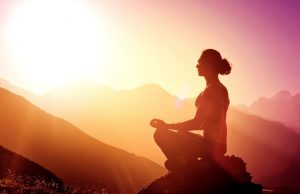 When we de-prioritize practices of liberation (healing, self-care/community care, stillness, mindfulness practices, relationship with natural world, spiritual and wellness practices), we are adding to the larger cultural suggestion that to be human is to be a sum of her/his/their checked list. When we ignore the power of healing in our lives and in our work, we keep our visions small and our human capacity low. Whether that looks like reimagining our organization’s policies and procedures to match more with our social justice values, hosting onsite wellness and healing practitioners or spending more time ritualizing and celebrating collectively, our hearts yearn to step into movements that value us fully, movements where healing and wellness are foundational for how we work.
When we de-prioritize practices of liberation (healing, self-care/community care, stillness, mindfulness practices, relationship with natural world, spiritual and wellness practices), we are adding to the larger cultural suggestion that to be human is to be a sum of her/his/their checked list. When we ignore the power of healing in our lives and in our work, we keep our visions small and our human capacity low. Whether that looks like reimagining our organization’s policies and procedures to match more with our social justice values, hosting onsite wellness and healing practitioners or spending more time ritualizing and celebrating collectively, our hearts yearn to step into movements that value us fully, movements where healing and wellness are foundational for how we work.
This is how we begin to bring the social justice back into our movements.
 Jardana Peacock is a leadership consultant, author and trainer working at the intersection of wellness, leadership and social justice. Her research has uncovered that centering wellness and healing is foundational for transformative and effective social change work. She has worked with hundreds of changemakers and organizations around the world. She lives in Louisville, Kentucky with her partner and two sons. Anne Braden and Ella Baker are movement mentors who guide her. Reach her at: www.jardanapeacock.com.
Jardana Peacock is a leadership consultant, author and trainer working at the intersection of wellness, leadership and social justice. Her research has uncovered that centering wellness and healing is foundational for transformative and effective social change work. She has worked with hundreds of changemakers and organizations around the world. She lives in Louisville, Kentucky with her partner and two sons. Anne Braden and Ella Baker are movement mentors who guide her. Reach her at: www.jardanapeacock.com.




Pingback: Associao De Yoga Integral – Health Care